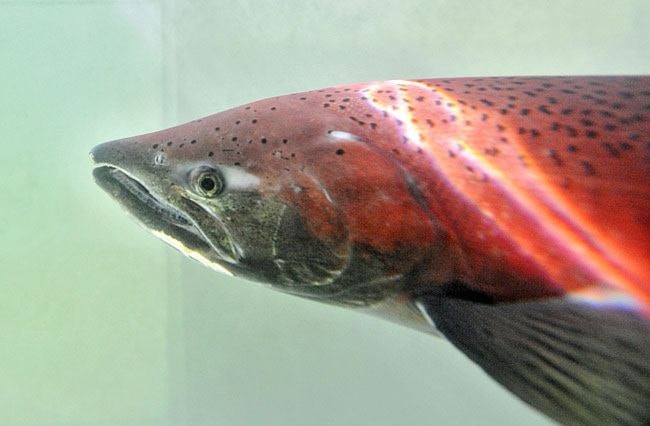As chinook salmon return to the Yukon River, the Yukon Salmon Sub-Committee is recommending more conservative management guidelines to protect a salmon run that’s been declining in recent decades.
Estimates for this year’s chinook run are low, ranging from 59,000 to 70,000 fish. In 2014, the total run size was just under 65,000, compared to an average run size of 150,000 in the 1990s.
On the Alaska portion of the river, commercial, sport, and subsistence fisheries have been closed for the second year in a row. Last year marked the first time that a complete fishing ban was put in place all along the Yukon River, in Alaska and Yukon.
Currently, commercial and sport fisheries cannot operate in Yukon if fewer than 51,000 chinook salmon are likely to return to their spawning grounds. First Nations subsistence fisheries can continue as long as that escapement value is higher than 30,000 fish.
But the salmon sub-committee wants to change those numbers to 55,000 and 42,500, respectively.
Dennis Zimmerman, the committee’s executive director, said those changes would bring the guidelines in line with the recommendations in the Yukon River Salmon Agreement, which was recognized in 2002 by the U.S. and Canada.
“We need to ensure that more fish get across the border,” he said. He said the committee is also recommending that the cutoff for subsistence fisheries be moved to the midpoint of the “yellow zone,” around 48,750 fish.
But not everyone agrees that more conservative guidelines are the best way to protect the run.
Chief Carl Sidney of the Teslin Tlingit Council said the salmon had been declining for years before the chinook fishery was finally closed. He worries that raising the escapement objectives now will only cause more disagreement.
“Why are we asking for an increase when the salmon are in trouble already?” he said. “It’s probably going to be a big fight. I don’t support it.”
Last year, escapement goals for chinook salmon were met for only the third time in eight seasons.
Still, Sidney said it would be good for his community if the higher escapement targets help the fish numbers to bounce back. Since his First Nation is located quite far upstream, his people haven’t been able to catch any chinook salmon for 15 years.
Zimmerman said that even under the current, lower escapement objectives, many First Nations have voluntarily closed their subsistence fisheries as the run has declined. Last year, only 100 chinook salmon were fished in Yukon.
The salmon sub-committee is also recommending that more emphasis be placed on in-season assessments of salmon age, sex, length, and run time, not just run size.
“Last year, there were a lot of fish that came across, but the quality of escapement was in question,” he said. Many of the fish were young males, and none were older than five or six years. An absence of large, mature females means the population won’t recover as quickly.
Zimmerman said the committee’s recommendations will be finalized in the coming days, and will then be submitted to the Department of Fisheries and Oceans for review.
Contact Maura Forrest at
maura.forrest@yukon-news.com
Correction
An earlier version of this article mistakenly compared Yukon River chinook salmon run sizes of 65,000 in 2014 to 300,000 in the 1990s. That 2014 figure only counts Canadian-origin fish, while the number for the 1990s includes chinook that originated in Alaska. The run size of Canadian-origin chinook in the 1990s was approximately half as big, at 150,000 fish. We regret the error.
